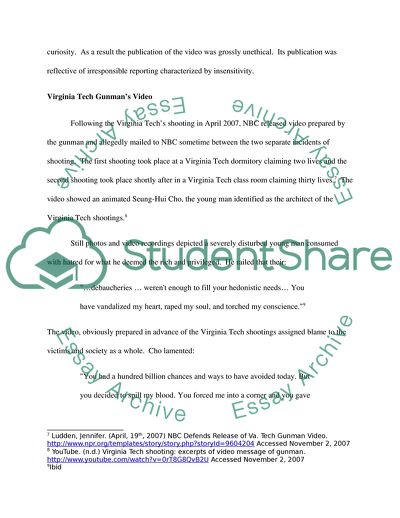Cite this document
(Media Ethics: The Case of Virginia Tech Gunmans Video Literature review, n.d.)
Media Ethics: The Case of Virginia Tech Gunmans Video Literature review. https://studentshare.org/ethics/1709861-was-it-ethical-to-run-the-virginia-tech-shootings-gunmans-video-on-nbc
Media Ethics: The Case of Virginia Tech Gunmans Video Literature review. https://studentshare.org/ethics/1709861-was-it-ethical-to-run-the-virginia-tech-shootings-gunmans-video-on-nbc
(Media Ethics: The Case of Virginia Tech Gunmans Video Literature Review)
Media Ethics: The Case of Virginia Tech Gunmans Video Literature Review. https://studentshare.org/ethics/1709861-was-it-ethical-to-run-the-virginia-tech-shootings-gunmans-video-on-nbc.
Media Ethics: The Case of Virginia Tech Gunmans Video Literature Review. https://studentshare.org/ethics/1709861-was-it-ethical-to-run-the-virginia-tech-shootings-gunmans-video-on-nbc.
“Media Ethics: The Case of Virginia Tech Gunmans Video Literature Review”. https://studentshare.org/ethics/1709861-was-it-ethical-to-run-the-virginia-tech-shootings-gunmans-video-on-nbc.


